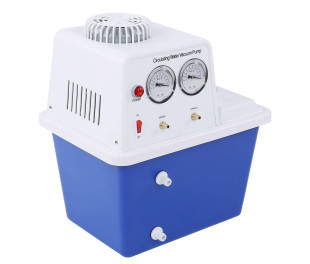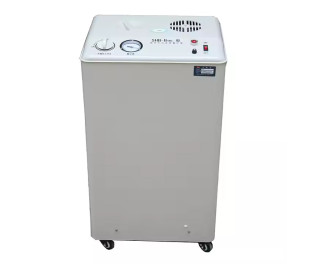Vacuum Pump
Laboratory Vacuum Pumps - Professional Grade Equipment
When you're running a rotary evaporator at 3pm and your vacuum pump starts losing pressure, you learn fast why pump selection matters. Laboratory vacuum pumps remove air and gases from sealed systems to create controlled low-pressure environments, which changes boiling points, speeds filtration, and enables techniques that simply don't work at atmospheric pressure.
Reliable Vacuum Generation for Laboratory Operations
Most lab workflows depend on consistent vacuum levels between 1 and 760 Torr. Rotary evaporators need stable vacuum to maintain precise solvent recovery temperatures, while vacuum filtration requires enough flow rate to pull solutions through membrane filters without waiting all day. Pumps with flow rates from 0.5 to 100 L/min handle everything from small-scale sample prep to industrial distillation setups. When you're connecting glassware like a Claisen adapter or Adapter Fractionation Connecting 75° with socket for complex distillations, your pump needs enough capacity to evacuate the entire system volume quickly.
Pumping Speed and Ultimate Vacuum Levels
- Diaphragm pumps: Reach 1-10 Torr with 0.5-5 L/min flow, best for basic filtration and degassing where deep vacuum isn't critical
- Rotary vane pumps: Achieve 0.1-1 Torr at 10-60 L/min, the workhorse for rotary evaporation and most distillation with Adapter Bent 75° configurations
- Scroll pumps: Hit 0.01 Torr with 15-100 L/min, necessary for freeze drying prep and high-vacuum analytical work
Your actual vacuum level depends on system leaks too. Even expensive pumps struggle if your glassware joints aren't properly greased.
Oil-Free versus Oil-Sealed Pump Technologies
Oil-sealed rotary vane pumps reach deeper vacuum and cost less upfront, but they contaminate vapors with oil mist and need oil changes every 3-6 months. Oil-free diaphragm and scroll pumps eliminate contamination risk, which matters when you're recovering expensive solvents or working with reactive chemicals. Chemical-resistant construction with PTFE and stainless steel components protects against corrosive vapors, though you should still pair aggressive chemistry with circulating chillers and heaters to condense vapors before they reach the pump.
Chemical Vapor Resistance and Durability
Acids, solvents, and moisture destroy standard pumps fast. PTFE-coated diaphragms and stainless steel housings extend service life when handling chlorinated solvents or acidic distillations. Variable speed control lets you match pumping capacity to your application—run slower for gentle vacuum filtration, faster for rapid solvent stripping. Digital vacuum gauges show real-time pressure so you catch leaks immediately instead of wondering why your distillation temperature is wrong. Models operating from -10°C to 40°C work in cold rooms and standard lab conditions without performance drops.
Our partners
We only work with trusted brands
Sign up to our newsletter to get the latest news and updates about our products.








